|
PARENTS - Easy Drills to Practice Catching A Baseball with your Child Please ensure you have recently reviewed or are familiar with the
fundamentals of catching a baseball
page of this site before utilizing these drills with your youth baseball player. This will ensure your son gets the most out of each drill by reinforcing the fundamentals while executing the drill.
Drill #1This drill is a perfect place to start practicing the fundamentals of catching a baseball with a first time player or novice. The equipment required to practice this drill is basic. All you need is a glove and a baseball. If you are in need of this equipment before you can start, I've included this easy to use site to acquire gloves and baseballs at great prices. The drill is designed to allow your son to practice moving his glove to the appropriate catching position based on where the ball is headed. It can be practiced indoors or outside. Here's how it should be executed: Step 1: Player should have glove on correct hand (hand opposite the one you throw with). Partner (parent, guardian, sibling or friend) holds the baseball in 1 hand. Player and partner face each other standing about 10ft apart. Player -> 10ft <- Partner Step 2: Partner holds baseball out in front of themself toward the player and moves the baseball to each of the 8 locations they may have to make a catch. The player should should practice the proper mechanics of catching a baseball by moving their body and glove as necessary to catch the ball (if it was actually thrown). Here are the 8 positions the partner should move the ball to so the player can practice the proper catching mechanics.
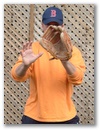


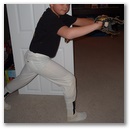
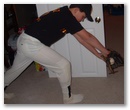
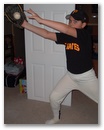
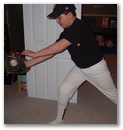

Since the ball is not thrown in this drill, it's perfect for the first time player or novice to prevent injuries. It can also be practiced by the player alone in front of a mirror as well. This is a great way to introduce the technique of properly catching a baseball while beginning to build the muscle memory of the mechanics.
Looking for your favorite team or player's poster, pennant and much more,
Click here to get your favorite.
All your favorite sports teams and players are available here.
Drill #2This drill takes drill #1 to the next level. Same rules apply, the partner indicates the catching position to the player and throws the ball instead of just holding it in front of them. Please refer to the 8 pictured positions of catching a baseball in drill #1. There are several variations to use this drill: - Both participants can be players and practice the drill back and forth with each other. - If no partner is available, this can be practiced alone by bouncing the ball off a wall or rebounder screen. If you need a rebounder screen, Here's a great place to purchase rebounder screens and other baseball equipment. Just click on the Baseball training aid link on the left column and select screens and nets. Page ahead to reach the rebounder screen. It's as simple as that. - There are 3 different types of balls you can use for this drill. A tennis ball can be used for the beginner to reduce injury risk and build condifence. Reduced injury factor (also know as RIF) baseballs can be used to reduce injury risk as well. Naturally, the more proficient player can use the regular baseball.
Drill #3This drill is for the more advanced player (having mastered the first 2 drills in this section). Please refer back to the basic 8 positions most commonly used to catch a baseball in drill #1 or
visit the baseball catching fundamentals page.
- Using the partner approach. Randomly throw to your partner at any of the 8 catching positions without informing them of where the ball will be thrown. - If you don't have a partner, this can be practiced alone by bouncing the ball off a wall or rebounder screen. If you need a rebounder screen, Here's a great place to
purchase rebounder screens and other baseball equipment.
- Again, there are 3 different types of balls you can use for this drill. A tennis ball can be used for the beginner to reduce injury risk and build condifence. Reduced injury factor (also know as RIF) baseballs can be used to reduce injury risk as well. Naturally, the more proficient player can use the regular baseball.
If you are looking for a great place to purchase sports jackets or warm-ups,
click here and personalize your very own.
Leave Catching a Baseball drill page and return to home page
|
